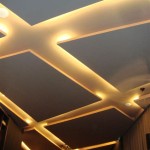Essential Aspects of Changing Ceiling Light Location
Replacing or relocating a ceiling light can significantly enhance the ambiance and functionality of a room. It involves several essential aspects that require careful consideration to ensure safety and achieve the desired outcome. This article will explore these aspects, providing guidance and recommendations for effective ceiling light location changes.
Electrical Safety
Electrical safety should always be the top priority when working with lighting fixtures. Ensure that the power is turned off at the circuit breaker before beginning any work. Wear insulated gloves and use a voltage tester to verify that the circuit is de-energized. Always follow manufacturer's instructions and local electrical codes to prevent electrical hazards.
Ceiling Height and Fixture Dimensions
The ceiling height and fixture dimensions play a crucial role in determining the optimal location of the light. For rooms with low ceilings, it's best to choose flush-mount or semi-flush-mount fixtures that hug the ceiling closely. Rooms with high ceilings can accommodate larger fixtures such as chandeliers or pendant lights. Consider the dimensions of the fixture in relation to the size of the room to create a balanced and visually appealing effect.
Purpose of the Room
The purpose of the room influences the type and location of the light fixture. For a living room or dining room, a central light fixture provides general illumination. A kitchen requires task lighting over work surfaces, while a bedroom may benefit from ambient lighting for a cozy atmosphere. Understanding the functional needs of the space will help you choose the appropriate light fixtures and placement.
Natural Light Sources
Consider the natural light sources in the room when positioning the ceiling light. Avoid placing the fixture directly under a window or skylight, as this can create glare or uneven illumination. Instead, supplement natural light by placing the light fixture in an area that receives less daylight. This allows for a more balanced and harmonious lighting scheme.
Focal Points and Architectural Features
The ceiling light location can highlight architectural features or draw attention to specific areas of the room. Center the fixture over a fireplace or dining table to create a focal point. Use track lighting or recessed lighting to illuminate artwork or architectural details. The placement of the light fixture should complement and enhance the overall design of the space.
Conclusion
Changing the location of a ceiling light is a task that requires careful planning and consideration of various factors. By prioritizing electrical safety, accounting for ceiling height and fixture dimensions, determining the purpose of the room, considering natural light sources, and highlighting architectural features, you can effectively reposition a ceiling light to enhance the ambiance, functionality, and aesthetics of your space.

Easy Ways To Replace An Led Recessed Light Bulb 13 Steps

How To Change A Ceiling Light With Pictures Wikihow

How To Open Ceiling Light Change Bulb R Lighting

How To Change A Recessed Or Canned Light Bulb

How To Change Your Light Fixture In Seven Easy Steps A Pinch Of Joy

What Is This And Can I Change It To A Normal Lightbulb R Howto

How To Replace Install A Light Fixture The Art Of Manliness

3 Easy Ways To Change A Ceiling Light Bulb Wikihow

How To Replace A Light Fixture With Ceiling Fan Projects By Peter
Dome Ceiling Light Bulb Replacement Ifixit Repair Guide
Related Posts








